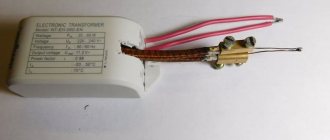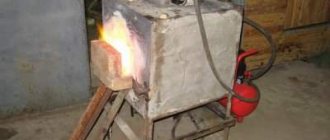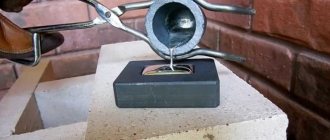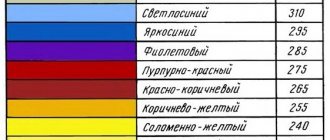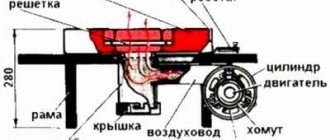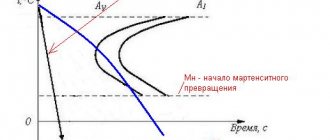Historical reminders to note
The noted melting technique is used in industry, medicine, and the domestic sphere, due to the pronounced advantages compared to traditional heating methods:
- resistive,
- fiery,
- stove and others.
Induction heating is especially useful for high-precision or repetitive applications.
Induction heating was first used by Michael Faraday, a physicist and chemist from Great Britain. The scientist discovered a unique heating property while studying the induction of currents in wires under the influence of a magnet.
However, the basic principles of induction heating were presented a little later by James Maxwell in a unified theory of electromagnetism. At the same time, James P. Joule was the first to describe the heating effect of current flowing through a conductive material.
In 1887, Sebastian Ziani de Ferranti proposed induction heating as a method for melting metals. The first fully functional induction furnace was built and introduced to the public (1891) by F. A. Kjellin. The first application of a high-frequency furnace was realized by Edwin F. Northrup (1916).
The development of solid-state oscillators using new power semiconductor technologies has provided potential beyond the industrial environment. Since the late 1980s, various proposals for use have appeared.
In recent years, there has been particular interest in induction heating for medical procedures, since this method provides accurate and targeted local heating.
Types of induction furnaces
Considering the classification of devices, we note that the workpieces can be heated both inside and outside the coil. That is why there are two types of induction furnaces:
- Channel. This kind of device has small channels that are located around the inductor. To generate an alternating magnetic field, a core is located inside.
- Crucible. This design is characterized by the presence of a special container called a crucible. It is made from refractory metal with a high melting point.
It is important that channel induction furnaces have large overall dimensions and are intended for industrial metal melting. Due to the continuous melting process, a large volume of molten metal can be obtained. Channel induction furnaces are used for melting aluminum and cast iron, as well as other non-ferrous alloys.
Crucible induction furnaces are characterized by relatively small sizes. In most cases, this type of device is used in jewelry making, as well as when melting metal at home.
Construction of an induction crucible furnace
Sectional view of an induction crucible furnace
Installations using transistors have become quite widespread, since they can be made with your own hands with minimal time and money.
Basics of Induction Heating Technology
Induction heating technology requires an alternating current source passed through an inductor. As a result, the inductor generates an alternating magnetic field, which leads to the following effect:
This effect, for example, can be achieved by using the described technology for working with metals and semiconductor elements
When an object is placed within the area of this field, two heating effects occur:
- Hysteresis losses, which inevitably occur only in magnetic materials like iron, nickel, cobalt, etc. The cause of the losses is friction between molecules when the material is constantly magnetized in different directions. A higher frequency of magnetic field oscillations results in faster particle movement, which causes significant friction and therefore a large amount of heat.
- Eddy current losses, which occur as the Joule effect in any conductive material due to the influence of electric currents caused by a fluctuating magnetic field.
Both effects lead to heating of the processed object, but the second is most often the main source of heat in induction heating processes. In addition, hysteresis is not observed in non-magnetic materials.
Magnetic materials lose their magnetic specificity when heated above a certain temperature (Curie point).
The principle of obtaining warm-up: 1, 2 – alternating current; 3 – object subject to magnetic field influence; 4 – magnetic fluxes; 5 – eddy currents
Eddy currents also depend on the frequency of the magnetic field due to the skin effect: at high frequencies, currents flow close to the surface of the conductor.
This specificity is used to control the penetration depth of the induction heating process. As a result, either the entire object or only a specific part (for example, a surface area) is heated.
Induction Heating: Use for Various Applications
Thus, induction heating can be used for various applications:
- metal melting,
- rations,
- surface hardening, etc.
The conductors of the induction coil also have a skin effect. Therefore, pipes should be used instead of solid wires. When current flows through an inductor, similar resistive losses are observed due to the Joule effect. Water cooling is often used to prevent coil melting and damage.
Schematic diagram of an installation for domestic use, assembled from electronic components quite available for purchase on the commercial market
Considering the extensive availability of electrical (electronic) components available to the common man, there is every opportunity to create a do-it-yourself induction heating system for domestic use. A possible diagram of a household device with relatively low power is presented above.
Induction heating - advantages
If we consider induction technology and compare it with some classical heating technologies:
- resistive,
- fiery,
- stove, etc.
Induction heating has the following advantages:
- Short process time when, thanks to induction heating, the object is heated directly, which leads to a reduction in both warm-up time and heat loss. This method provides high power density and low (virtually zero) thermal inertia.
- High efficiency (values above 90%) is achieved due to the correct design of the power converter and coil. In addition, high temperatures can be achieved quickly and easily, given the significant reduction in heat loss to the environment.
- High level of control - precise control of the heating power is achieved using the appropriate coil design and control of the power converter. As a result, it is possible to implement additional functions: local heating, pre-heating, pre-defined temperature profiles.
- With industrial automation options, induction heating can improve both productivity and process quality. The quality of the product is guaranteed, since heating is carried out in a non-contact manner (without the intervention of a technological tool).
- Safety and cleanliness are ensured in the process, taking into account the absence of thermal pollution (air pollution), since the object is heated directly, without the use of fuel resources.
Design and use of an induction furnace
If desired, you can create an induction furnace for melting metal from scrap materials. The classic design has three blocks:
- A generator that creates high frequency alternating current. It is he who creates an electric current, which is converted into a magnetic field passing through the material and accelerating the movement of particles. Due to this, the transition of metal or alloys from solid to liquid occurs.
- The inductor is responsible for creating a magnetic field, which heats the metal.
- The crucible is designed for melting material. It is placed in an inductor, and the winding is connected to current sources.
The process of converting electric current into a magnetic field is used today in a wide variety of industries.
Construction of an induction melting furnace
The main advantages of the inductor include the following points:
- A modern device is capable of directing a magnetic field, thereby increasing efficiency. In other words, the charge is heated, not the device.
- Due to the uniform distribution of the magnetic field, the workpiece is heated evenly. In this case, from the moment the device is turned on until the charge is melted, a small amount of time takes place.
- The homogeneity of the resulting alloy, as well as its high quality.
- When heating and melting the metal, no evaporation is formed.
- The installation itself is safe to use and does not cause the formation of toxic substances.
There are simply a huge number of different options for homemade induction furnaces, each with its own specific features.
Induction heating technology innovation and future development
Even though induction heating systems have already reached maturity as a technology, the development of modern technologies is constantly accompanied by opportunities for new areas of research.
The coming years promise to include the following topics, which are expected to be of significant interest to the industrial sector.
Improving application efficiency
Advances in semiconductor manufacturing technology promise higher efficiency induction heating systems. In addition, special inductor shapes and designs will also ensure increased efficiency of the technology.
As a result, improvements can be expected not only in terms of performance, but also in terms of reliability of induction heating systems.
Industrial machines related to the described technology, that is, those that support induction heating, have been actively improved for the last few years
Process heaters equipped with several coils are:
- better heat distribution,
- higher productivity,
- process flexibility,
when using several simultaneously operating coils.
Such systems represent a significant technological breakthrough and are increasingly used not only in industry, but also in the domestic sector. However, it is not without problems.
Thus, efforts should be made to optimize the multi-output power converter design and advanced control algorithms. Another issue to carefully consider is the coupling effect between the individual coils.
Channel induction melting furnaces
This type is widely used in the smelting of non-ferrous metals.
Effectively used for copper and copper alloys based on brass, cupronickel, bronze. Aluminum, zinc and alloys containing these metals are actively melted in channel units. The widespread use of furnaces of this type is limited due to the inability to provide a fracture-resistant lining on the inner walls of the chamber. Molten metal in channel induction furnaces undergoes thermal and electrodynamic movement , which ensures constant uniformity of mixing of alloy components in the furnace bath. The use of channel furnaces of the induction principle is justified in cases where special requirements are imposed on the molten metal and manufactured ingots. The alloys are of high quality in terms of gas saturation coefficient and the presence of organic and synthetic impurities in the metal.
Channel induction furnaces operate like a mixer and are designed to level the composition, maintain a constant process temperature, and select the pouring speed into crystallizers or molds. For each alloy and casting composition, there are parameters for a special charge.
Advantages
- the alloy is heated in the lower part, to which there is no air access, which reduces evaporation from the upper surface, heated to a minimum temperature;
- channel furnaces are classified as economical induction furnaces, since the melting that occurs is ensured by a low consumption of electrical energy;
- the furnace has a high efficiency due to the use of a closed loop magnetic wire;
- Constant circulation of molten metal in the furnace accelerates the melting process and promotes uniform mixing of alloy components.
Flaws
- the durability of the stone internal lining decreases when high temperatures are used;
- the lining is destroyed when melting chemically aggressive alloys of bronze, tin and lead.
- when melting contaminated low-grade charge, the channels become clogged;
- the surface slag in the bath does not heat up to a high temperature, which does not allow operations to be carried out in the gap between the metal and the shelter and to melt chips and scrap;
- channel units do not tolerate interruptions in operation, which forces them to constantly store a significant amount of liquid alloy in the furnace mouth.
Complete removal of molten metal from the furnace leads to its rapid cracking. For the same reason, it is impossible to quickly change from one alloy to another ; you have to make several intermediate melts, called ballast.
